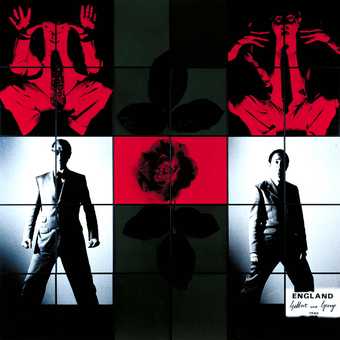
Gilbert & George, England 1980. Tate. © Gilbert and George.
No Such Thing as Society 1980–1990
13 rooms in Modern and Contemporary British Art
Against a backdrop of economic and social transformation, artists in the 1980s explore their experience of the land and the body to reflect on their own identities and sense of belonging
Margaret Thatcher’s premiership spans and defines much of Britain in this decade. Her government cuts public spending, privatises nationalised industries and challenges the power of unions. In 1984, the National Union of Mineworkers holds a year-long strike. By 1986, over three million people are unemployed. Meanwhile, after the ‘Big Bang’ of financial deregulation, the wealth of the City of London’s financial sector increases. The Northern Ireland conflict, known as the Troubles, continues. Young Black people across England clash with law enforcement against racial discrimination and police brutality. In 1986, as the AIDS epidemic rips through LGBTQIA+ communities, the British government prohibits local authorities from promoting, LGBTQIA+ rights.
Many of the artists in this room make work reflecting on life in Britain. Artists reframe their familiar ideas to express a combination of hope and frustration. Britain is viewed from the North of England, suburban gardens, the streets of Brixton in South London, and the Maze Prison in Northern Ireland. Other artists focus on the body to explore the boundaries between private and public social space. Some reflect on the experience of illness and death. Others make work about gender identity, sexuality or racial violence, using their personal experiences of being othered or excluded.
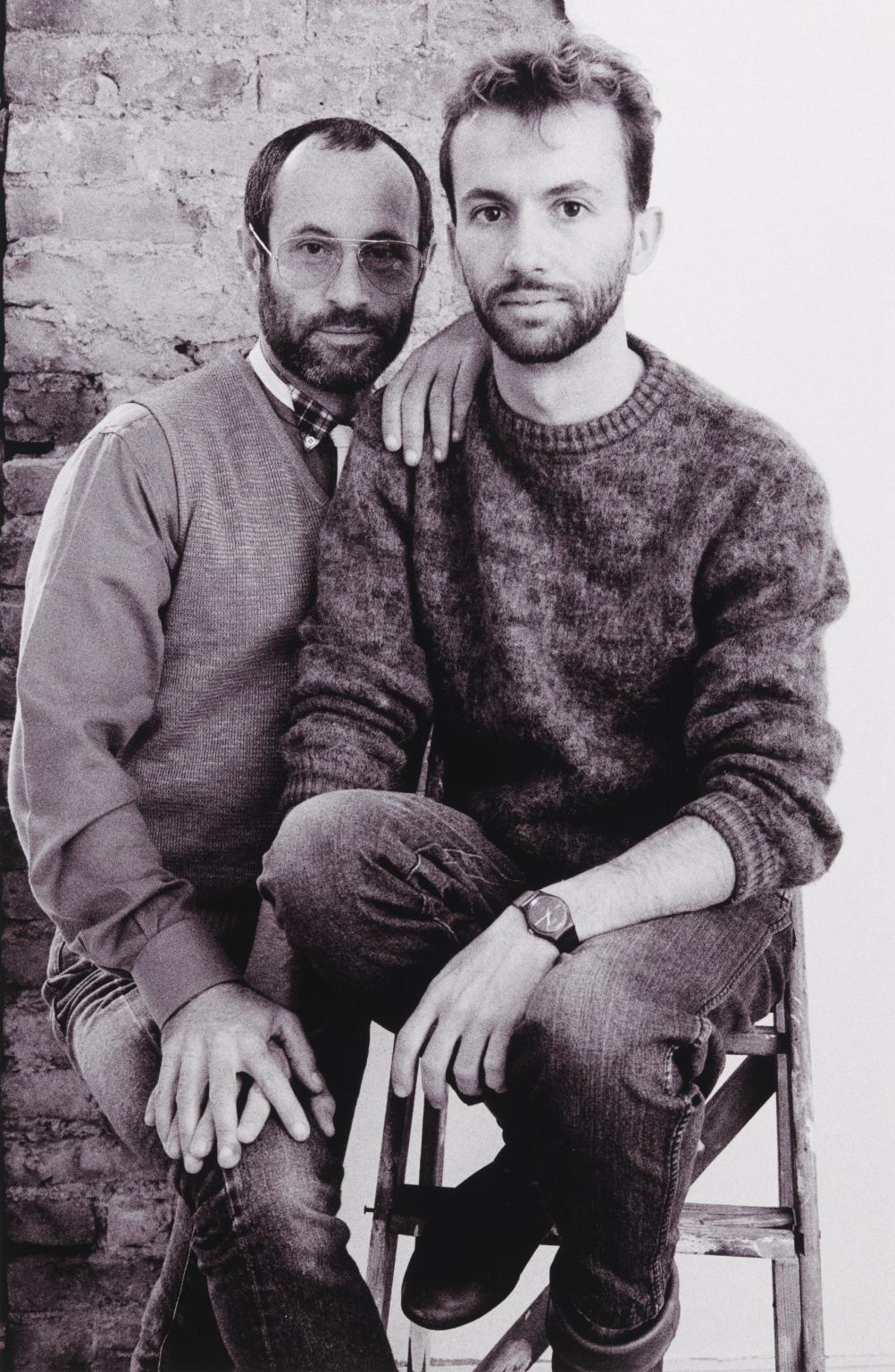
Sunil Gupta, Bruno & Daniel, London 1984, printed 2018
This series of black and white portraits features gay and lesbian couples from Sunil Gupta’s social circles in London and Newcastle. Called Lovers: Ten Years On, the project was shot over a period of two years from 1984–6, following the end of Gupta’s own ten-year relationship. Reminiscent of traditional family portraits, the photographs show couples in affectionate poses in their own living spaces. Prejudicial coverage of the HIV and AIDS epidemic in the 1980s threatened to turn public opinion against the acceptance of queer relationships, which were portrayed as ‘sexually deviant’. In contrast to these offensive depictions of queer love, the people in Lovers: Ten Years On are often presented as quite ordinary, middle-class, professional couples. Many of the people photographed would later lose their lives to HIV and AIDS.
Gallery label, January 2025
1/21
artworks in No Such Thing as Society
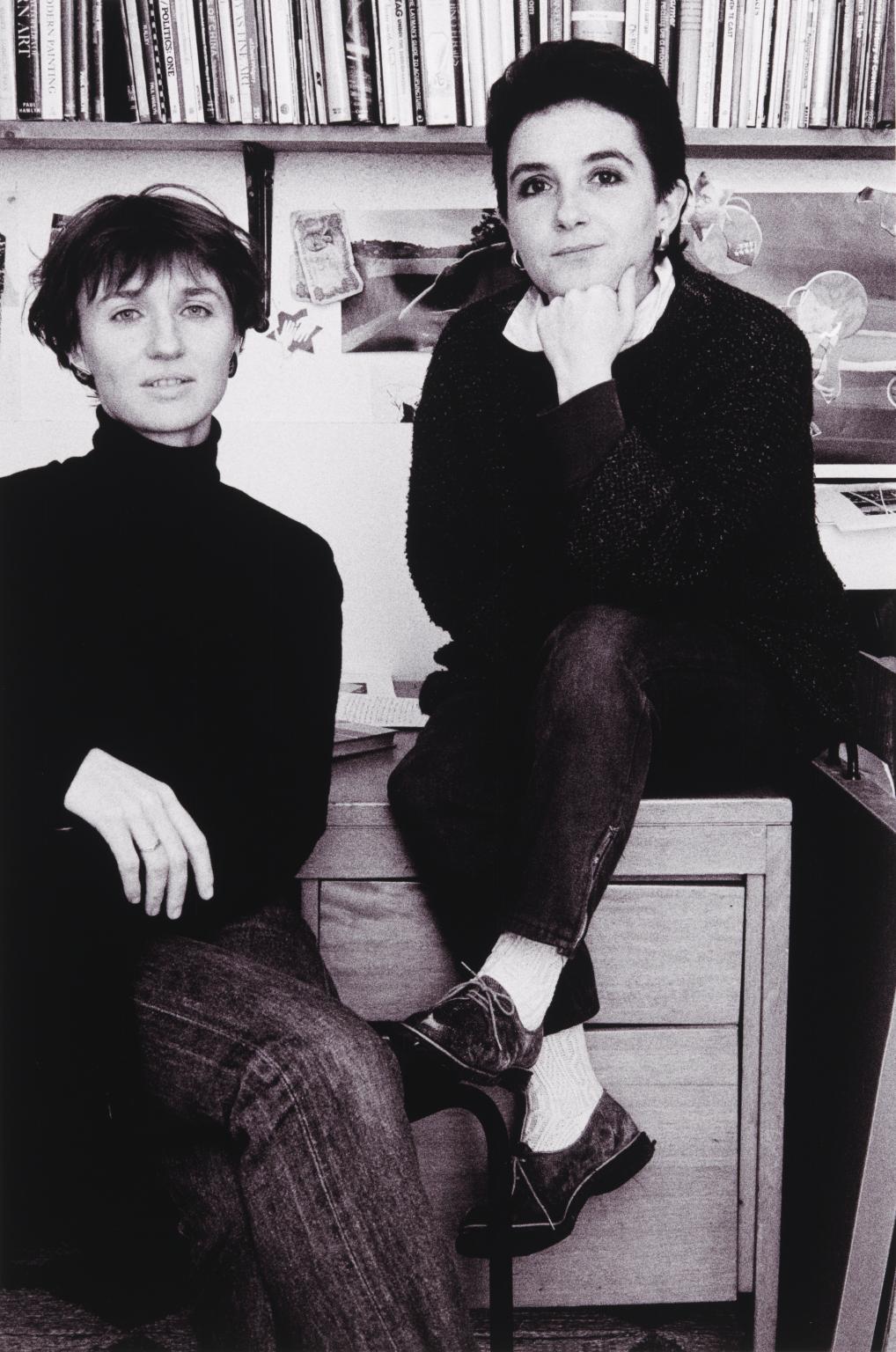
Sunil Gupta, Sue & Yve, London 1984, printed 2018
This series of black and white portraits features gay and lesbian couples from Sunil Gupta’s social circles in London and Newcastle. Called Lovers: Ten Years On, the project was shot over a period of two years from 1984–6, following the end of Gupta’s own ten-year relationship. Reminiscent of traditional family portraits, the photographs show couples in affectionate poses in their own living spaces. Prejudicial coverage of the HIV and AIDS epidemic in the 1980s threatened to turn public opinion against the acceptance of queer relationships, which were portrayed as ‘sexually deviant’. In contrast to these offensive depictions of queer love, the people in Lovers: Ten Years On are often presented as quite ordinary, middle-class, professional couples. Many of the people photographed would later lose their lives to HIV and AIDS.
Gallery label, January 2025
2/21
artworks in No Such Thing as Society
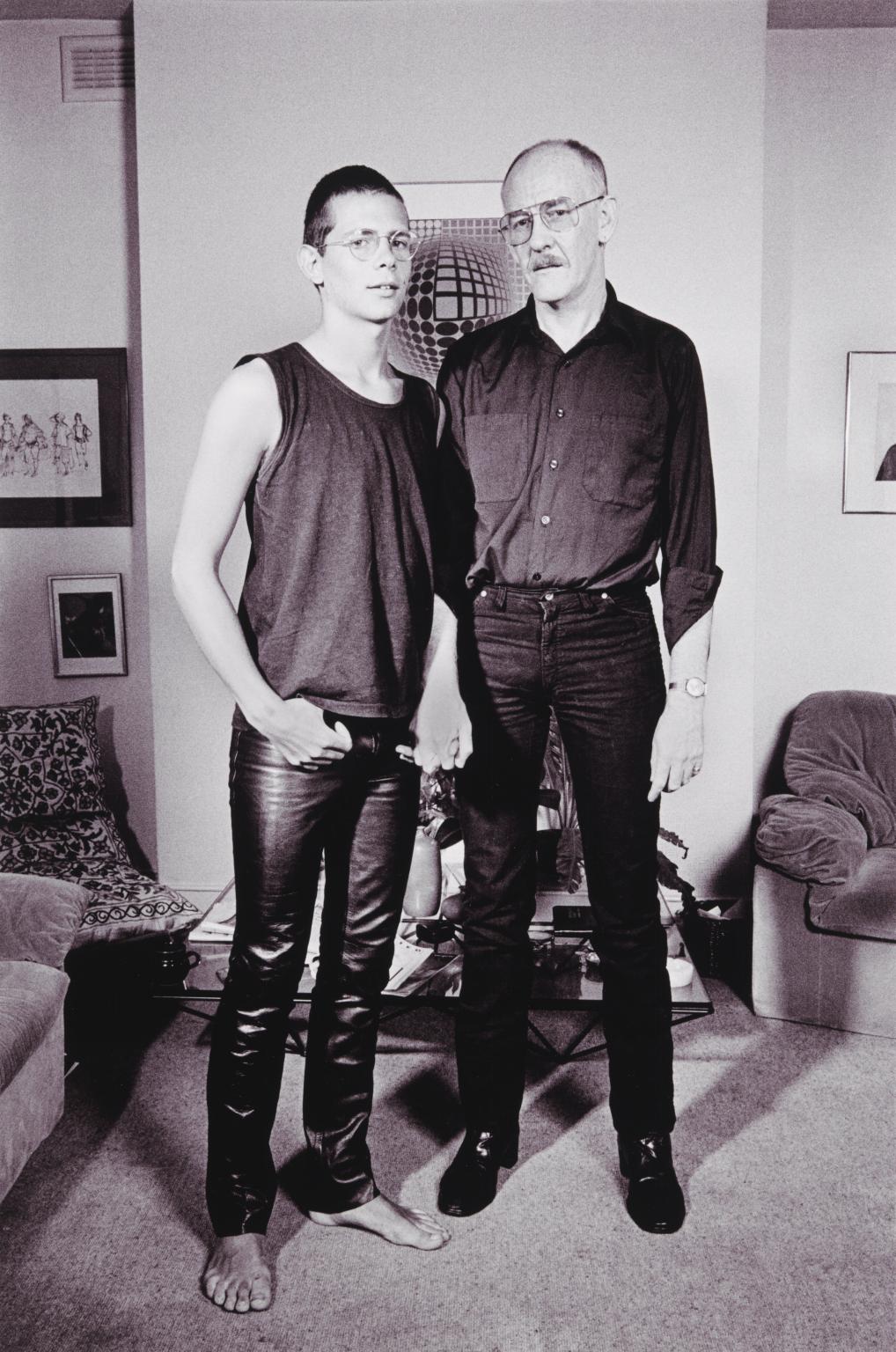
Sunil Gupta, Andrew & John, London 1985, printed 2018
This series of black and white portraits features gay and lesbian couples from Sunil Gupta’s social circles in London and Newcastle. Called Lovers: Ten Years On, the project was shot over a period of two years from 1984–6, following the end of Gupta’s own ten-year relationship. Reminiscent of traditional family portraits, the photographs show couples in affectionate poses in their own living spaces. Prejudicial coverage of the HIV and AIDS epidemic in the 1980s threatened to turn public opinion against the acceptance of queer relationships, which were portrayed as ‘sexually deviant’. In contrast to these offensive depictions of queer love, the people in Lovers: Ten Years On are often presented as quite ordinary, middle-class, professional couples. Many of the people photographed would later lose their lives to HIV and AIDS.
Gallery label, January 2025
3/21
artworks in No Such Thing as Society
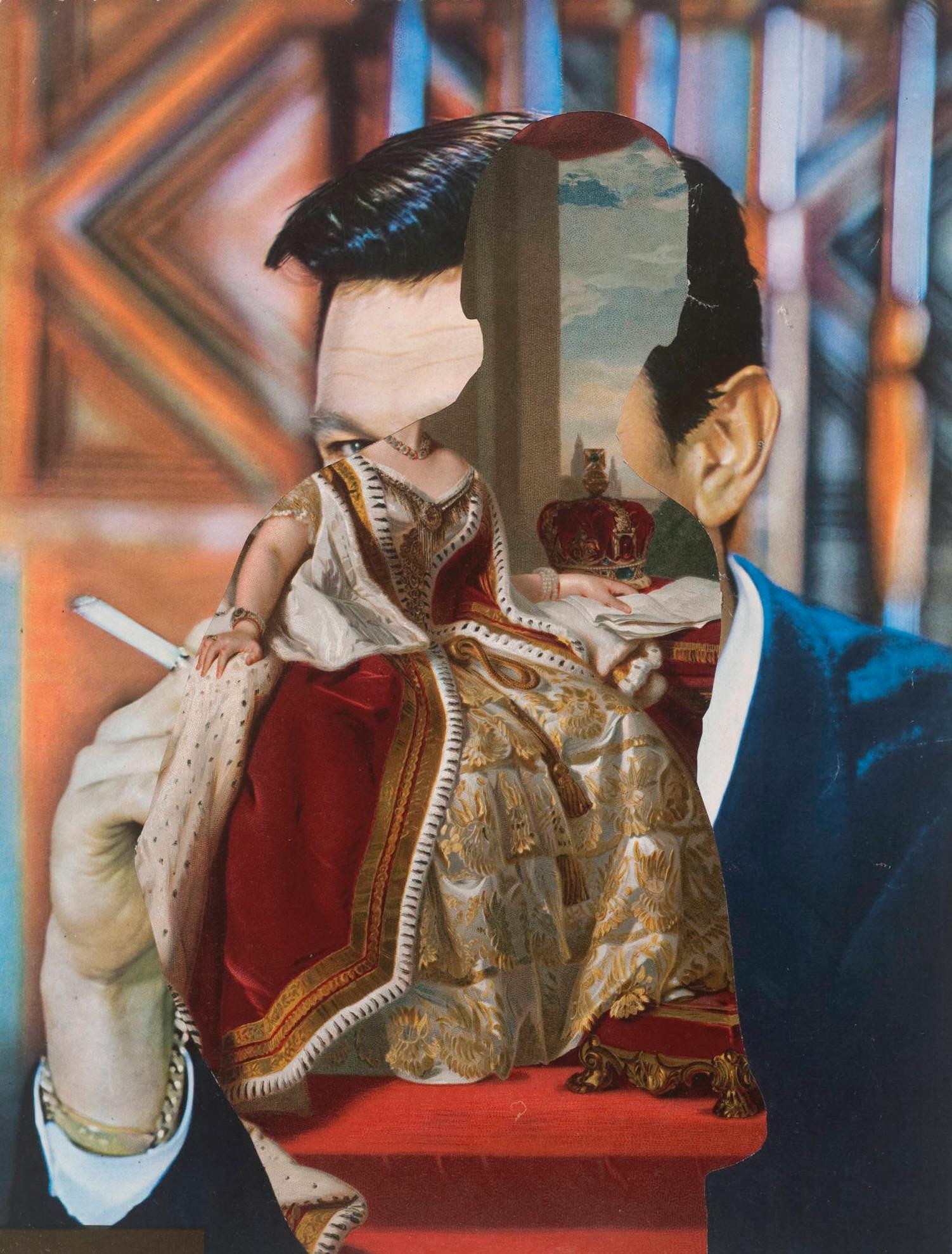
John Stezaker, Third Person 1988–9
Third Person is a collage combining three separate images. The principal image is a colour photograph of a film actor from the 1940s or 1950s. The silhouetted figure of another man has been cut out of this portrait, eliminating most of the actor’s face and chest, and the space has been filled with a reproduction of a painting of Queen Victoria. The outline of the second man cuts across the actor’s forehead and the corner of his right eye which looks out of the image at the viewer. His right hand, raised close to his face, is bisected by the collaged addition; it holds a cigarette that emerges from the point where the actor’s fingers meet the hand of Queen Victoria, lying on her ermine robes. The outline of the silhouetted male figure cuts off her head at the neck; the line of her necklace extends the line of the smoking actor’s right eyebrow. The silhouetted figure’s head is half filled with the image of a rich blue sky in which clouds are warmly illuminated in orange shades that complement the queen’s skin tones and the flesh tones of the smoking actor. The blue sky echoes highlights of blue light in the smoking actor’s black hair and on his dark jacket. These complimentary colours – shades of orange and electric blue – are repeated in the out of focus orange and blue patterning on the wall behind the actor.
4/21
artworks in No Such Thing as Society
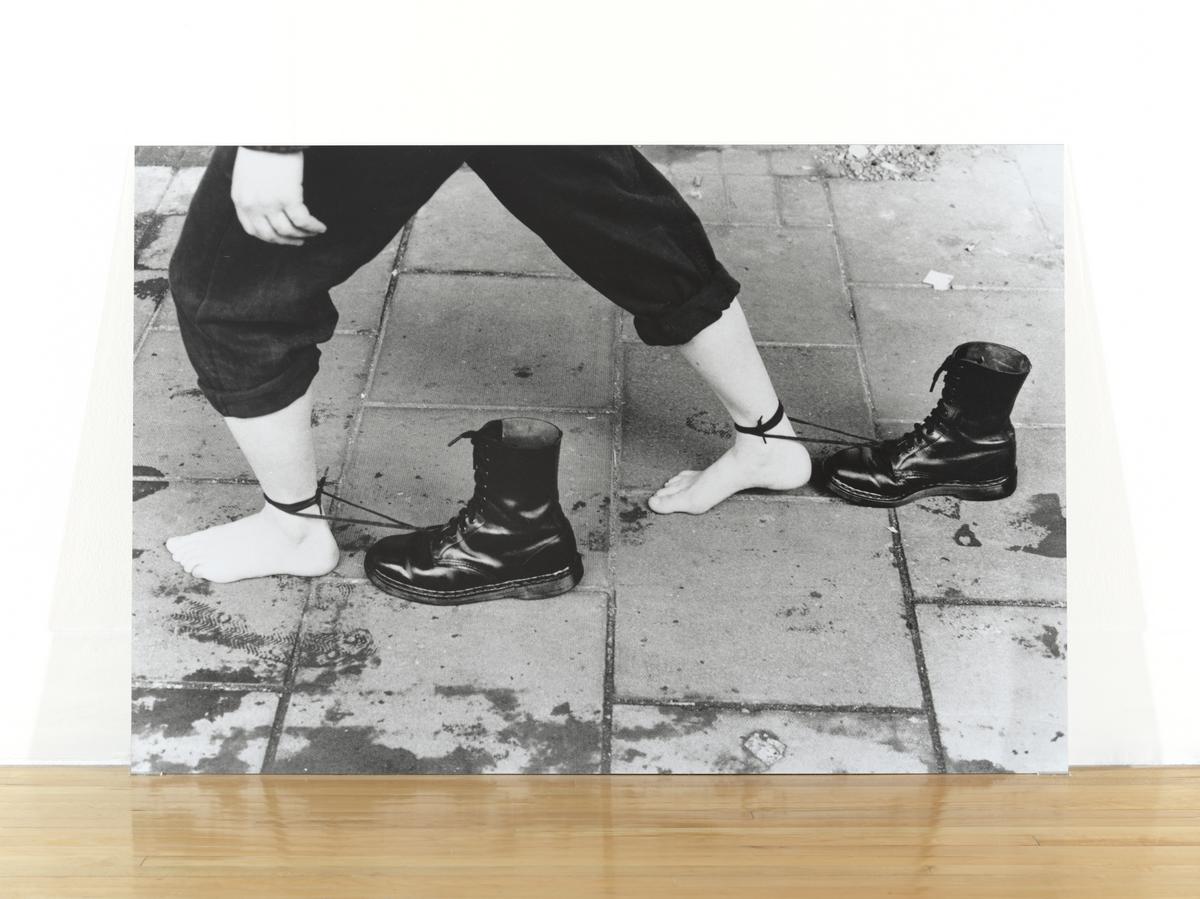
Mona Hatoum, Performance Still 1985–95
Mona Hatoum first became known in the early 1980s for a series of performance and video pieces which used her own body as a site for exploring the fragility and strength of the human condition under duress. Performance Still 1985 records one of three street performances which Hatoum carried out in Brixton for the Roadworks exhibition organised in 1985 by the Brixton Artists Collective. The performance consisted of the artist walking barefoot through the streets of Brixton for nearly an hour, with Doc Marten boots, usually worn by both police and skinheads, attached to her ankles by their laces. Performance Still, printed and published ten years later turns the original documentary photograph of the performance into a work in its own right, and has therefore come to identify this aspect of Hatoum’s practice.
Gallery label, October 2013
5/21
artworks in No Such Thing as Society
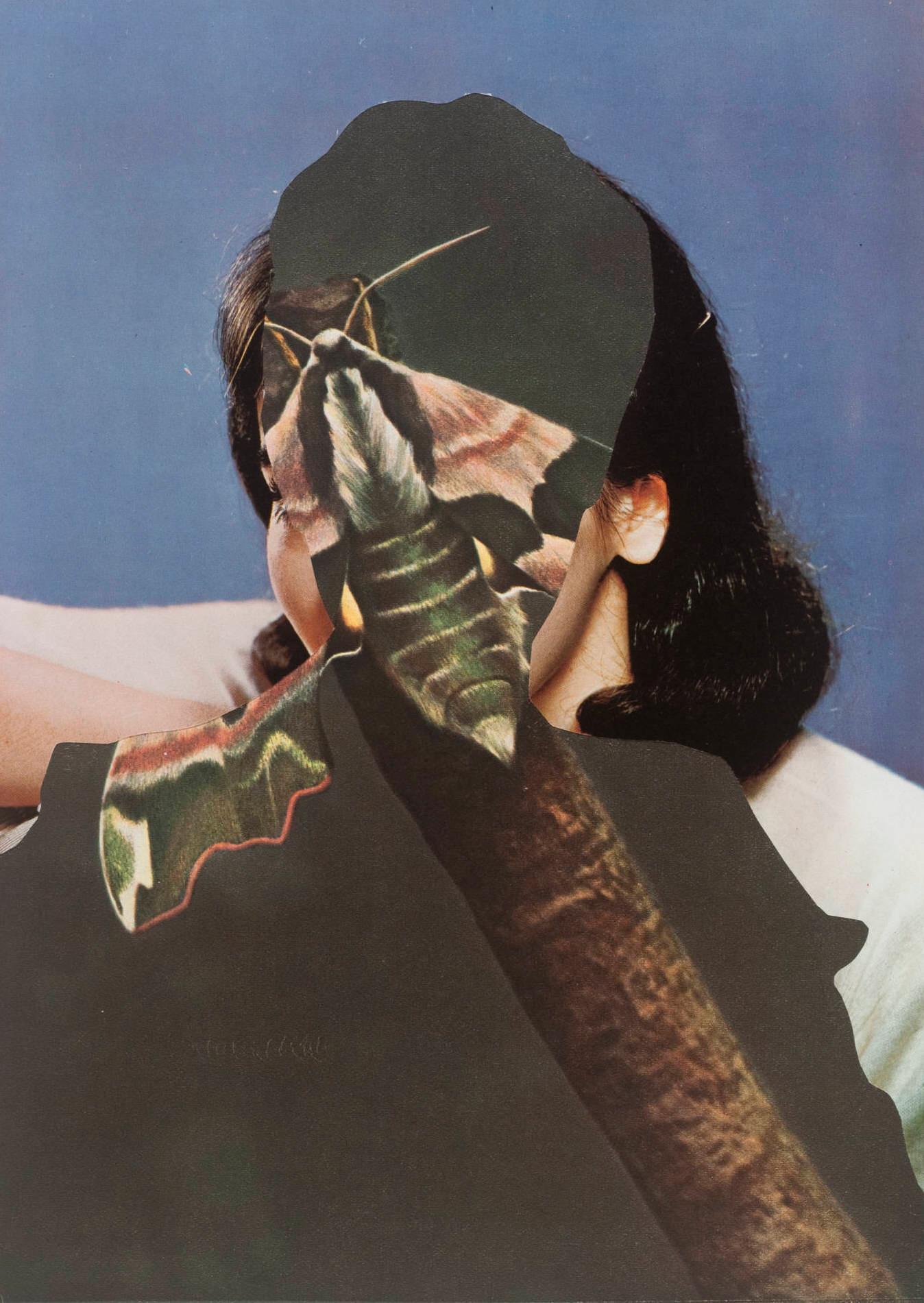
John Stezaker, Untitled 1989
Untitled is a collage combining three separate images. The principal image is a colour photograph of a film actress taken in the 1940s or 1950s. Her face has been excised by the silhouetted figure of another woman cut out of the paper on which the portrait was printed. The space of the silhouette is filled with a photographic reproduction of a moth on a branch. As is usual in a portrait, the photographed actress looks at the viewer but as a result of the artist’s intervention only her cheek, a few eyelashes and a sliver of eyebrow are visible on her right side and her jaw and ear on her left. Her right shoulder and part of her forearm are raised – she appears to be leaning on something. Stezaker’s collage obscures all the parts of her normally needed to read a portrait and in this sense the silhouetted figure operates like a mask – a concept central to Stezaker’s work (see Masks XI, XIII and XIV, 2005-6, T12345-7). The artist derived the image of the moth from an early colour photogravure, printed in a volume of The Natural World (a pre-war publication Stezaker found in a second hand book shop). The colours of its unusual markings – a delicate pink, white and two shades of brown – echo what we can see of the film actress’s skin tones, dark brown hair and white blouse or dress. The moth’s patterning covers most of the actress’s face with the uncanny effect of evoking a strange disfigurement. The artist has commented that the image reminds him ‘of that combination of the insectile and Victorian interiors in A.S.Byatt’s Morpho Eugenia (a short story printed in Angels and Insects, London 1992)’ (letter to the author 27 October 2007).
6/21
artworks in No Such Thing as Society
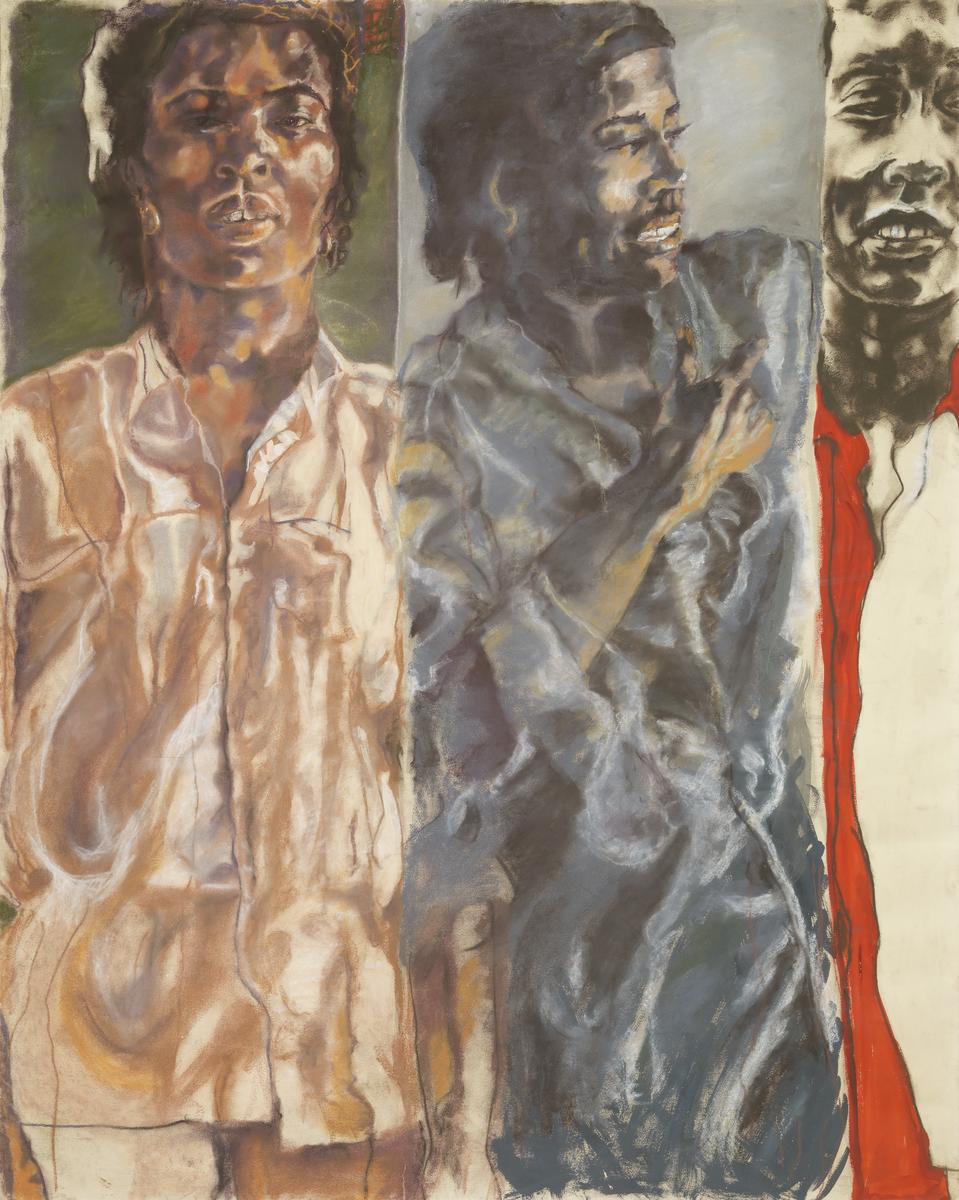
Claudette Johnson MBE, Untitled 1987
Untitled depicts three different views of Brenda Agard (1961-2012), Claudette Johnson’s close friend and fellow artist. Johnson worked on this pastel drawing for three months, building layers of pigment and blending them with her fingers. Instead of drawing from life, Johnson used a row of photographic test strips as a visual reference. Johnson describes her work as existing outside the realm of portraiture: ‘I’m not interested in portraiture or its tradition. I’m interested in giving space to Blackwomen presence.’
Gallery label, January 2025
7/21
artworks in No Such Thing as Society
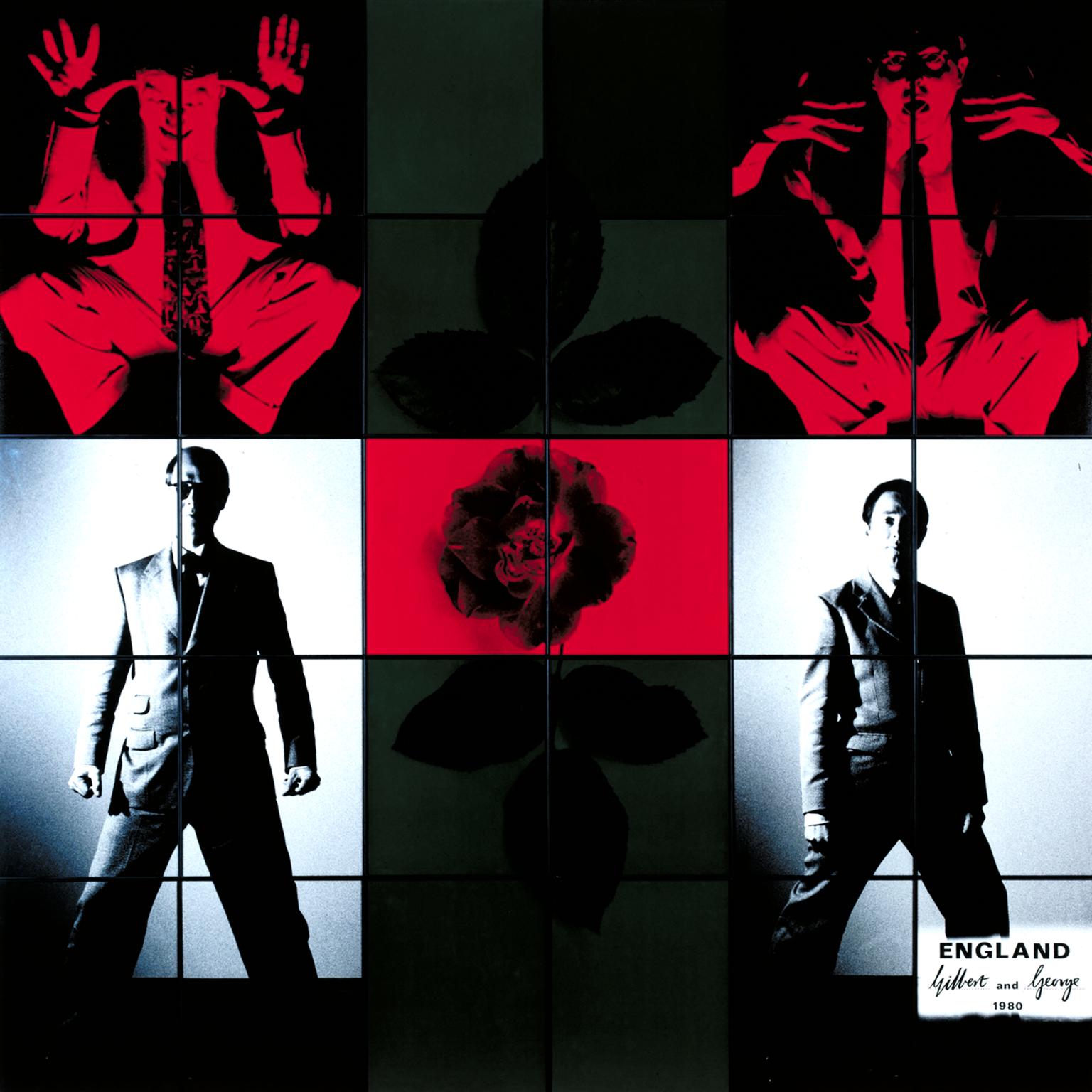
Gilbert & George, England 1980
A fading Tudor rose representing England occupies the centre of this work. On either side, Gilbert & George strike confident poses in ‘a physical salute’ to the country. The artists’ sinister, gargoyle-like alter-egos perch above, suggesting a threat to the figures below. From 1974, the colour red began to appear regularly in their works. It hints at connotations of violence, rage and sex. As they put it, ‘Red is like love, or it is like blood, or danger, or fire.’ England is part of Modern Fears, a series produced between 1980 and 1981.
Gallery label, January 2025
8/21
artworks in No Such Thing as Society
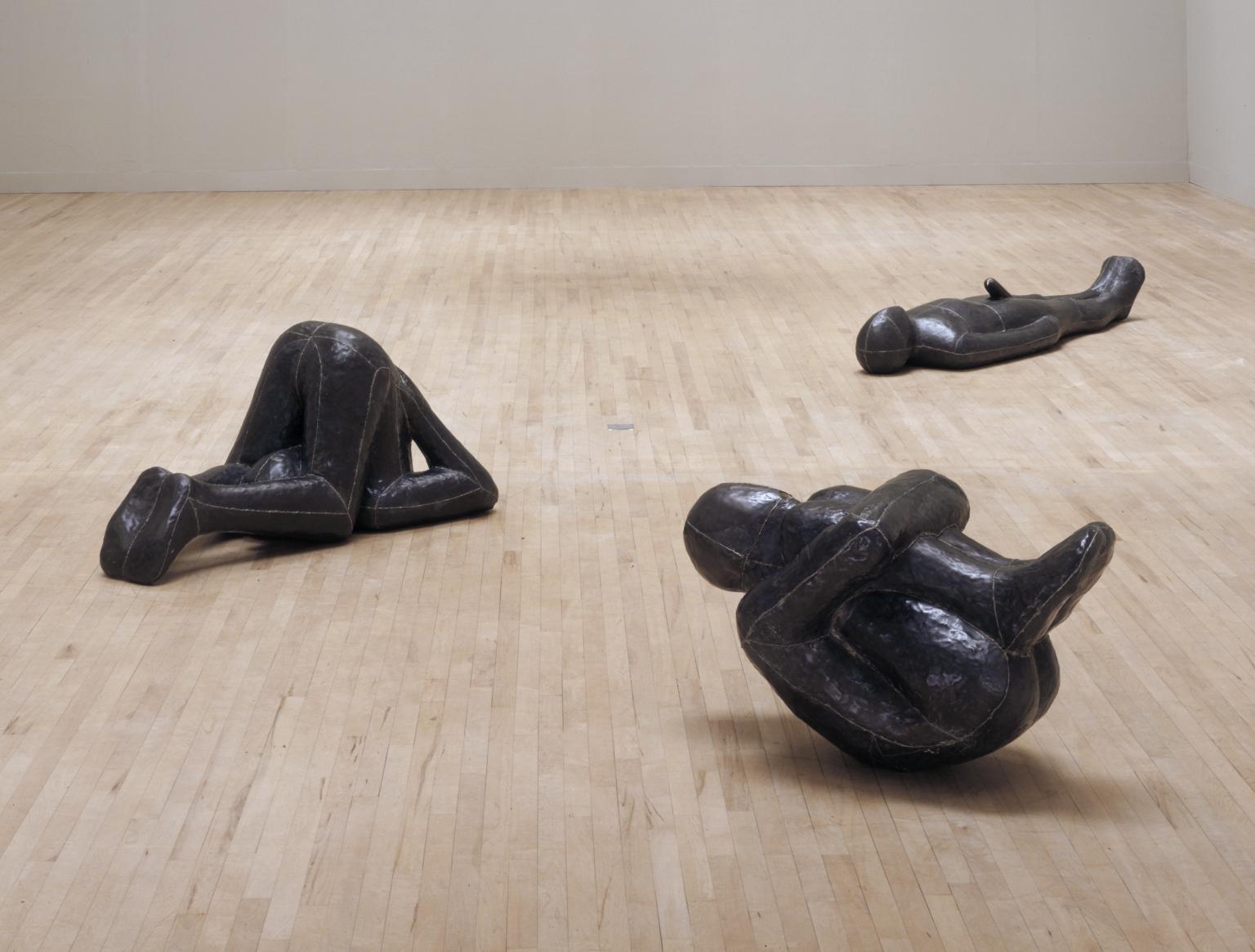
Sir Antony Gormley OBE RA, Three Ways: Mould Hole and Passage 1981–2
'You are aware that there is a transition, that something that is happening within you is gradually registering externally.' This is how Antony Gormley described his experience of making plaster casts of his own body. For Three Ways he used such casts to make lead figures in three simple poses: curled into a ball, bending over and lying down.
The sculptures have holes at the mouth, anus and penis respectively. These break the seemingly impenetrable surface of the lead body cases, suggesting an interaction between the outside world and the hollow space enclosed within.
Gallery label, August 2004
9/21
artworks in No Such Thing as Society
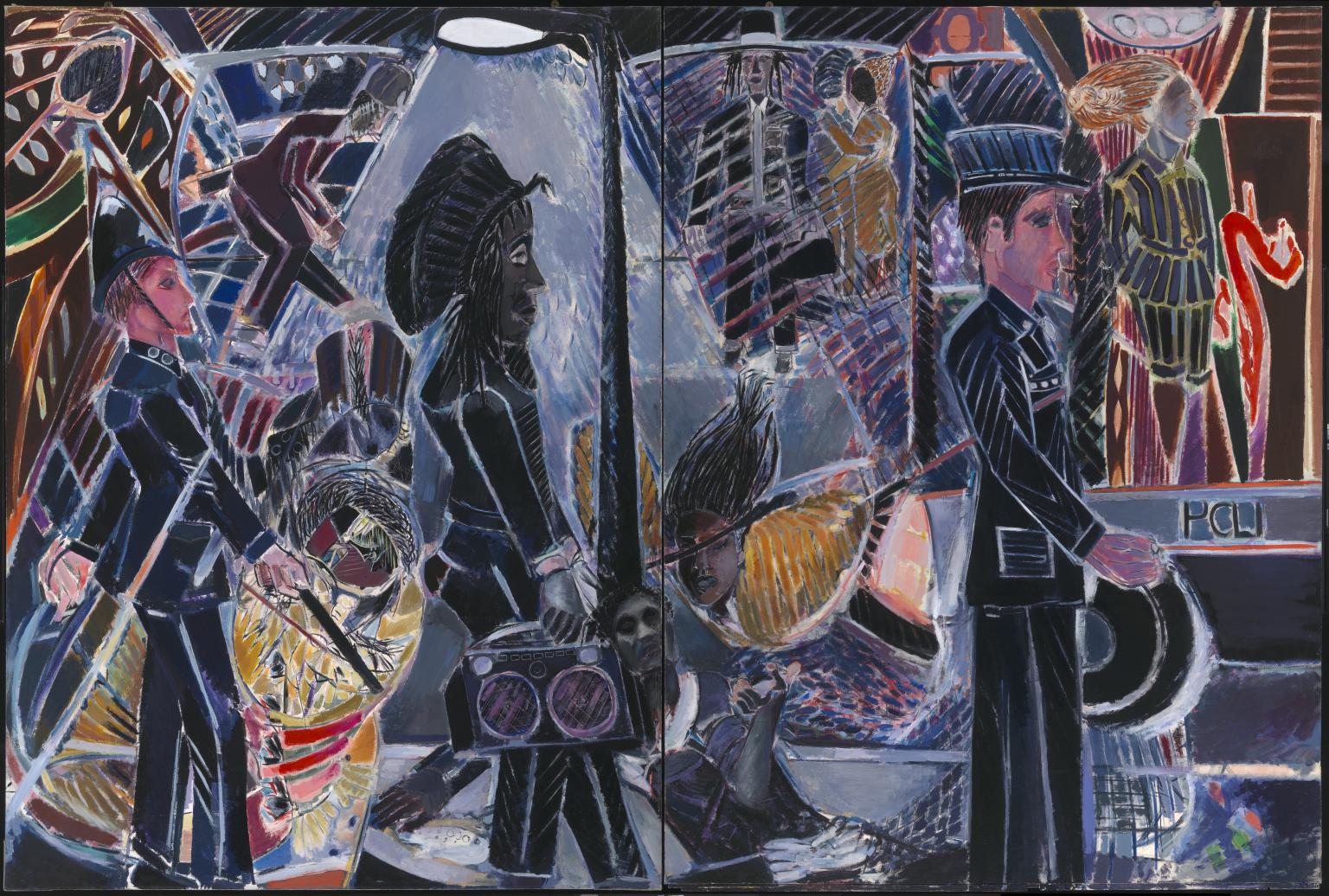
Denzil Forrester MBE, Three Wicked Men 1982
Three Wicked Men narrates the story of Winston Rose, a childhood friend of Denzil Forrester who died under contentious circumstances while in police custody in 1981. The stiff, uniformed figures of the two policemen flank Rose, seeming to drain the colour from their surroundings. Occasional flashes of bright activity interrupt from the street. Forrester belongs to a generation of Black British artists who use figurative painting to depict racial and social injustice. Working from the outset of the Thatcher government in the early 1980s, his dynamic and crowded scenes are inspired by his time spent working in London reggae and dub clubs.
Gallery label, January 2025
10/21
artworks in No Such Thing as Society
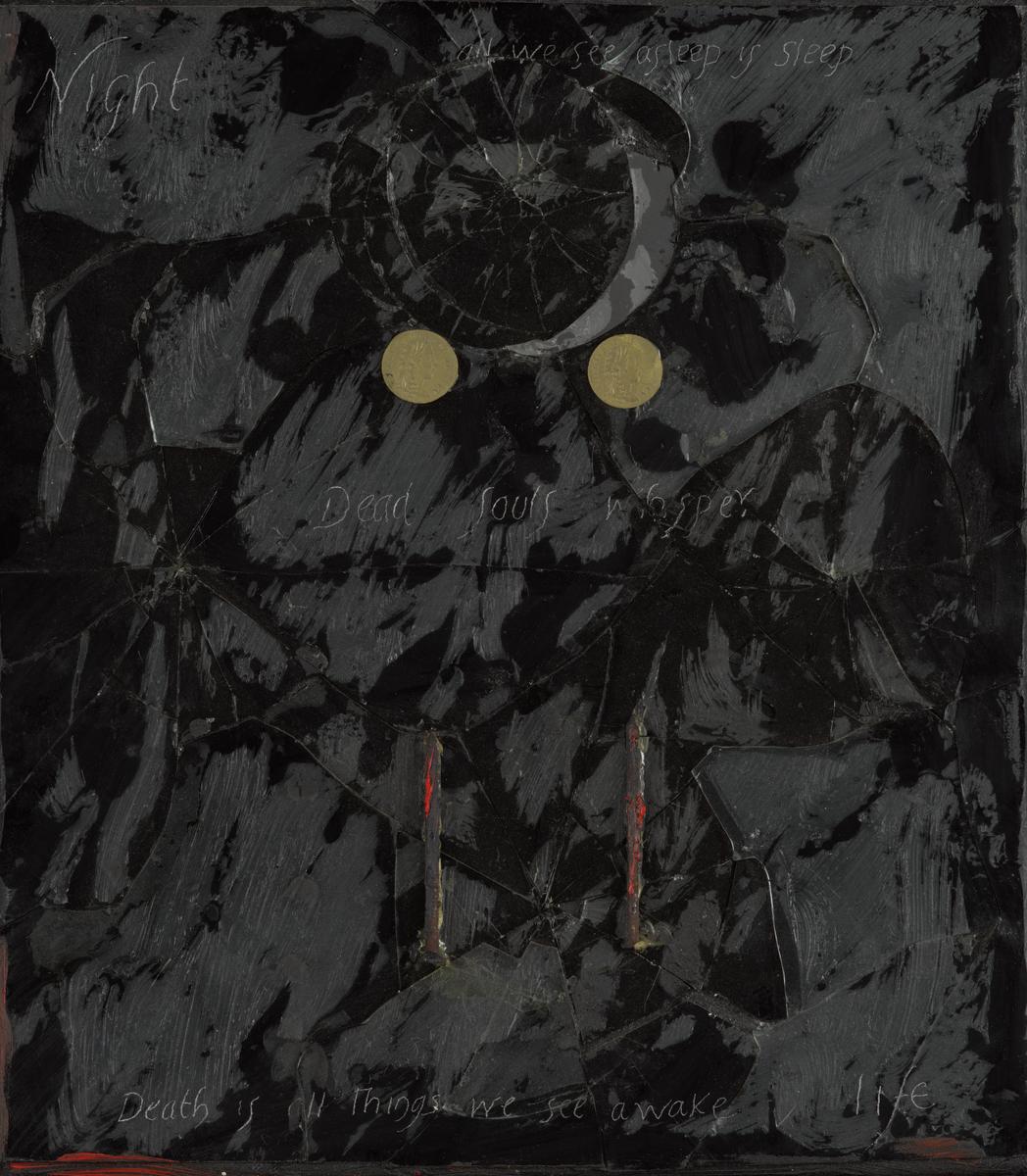
Derek Jarman, Dead Man’s Eyes 1987
11/21
artworks in No Such Thing as Society
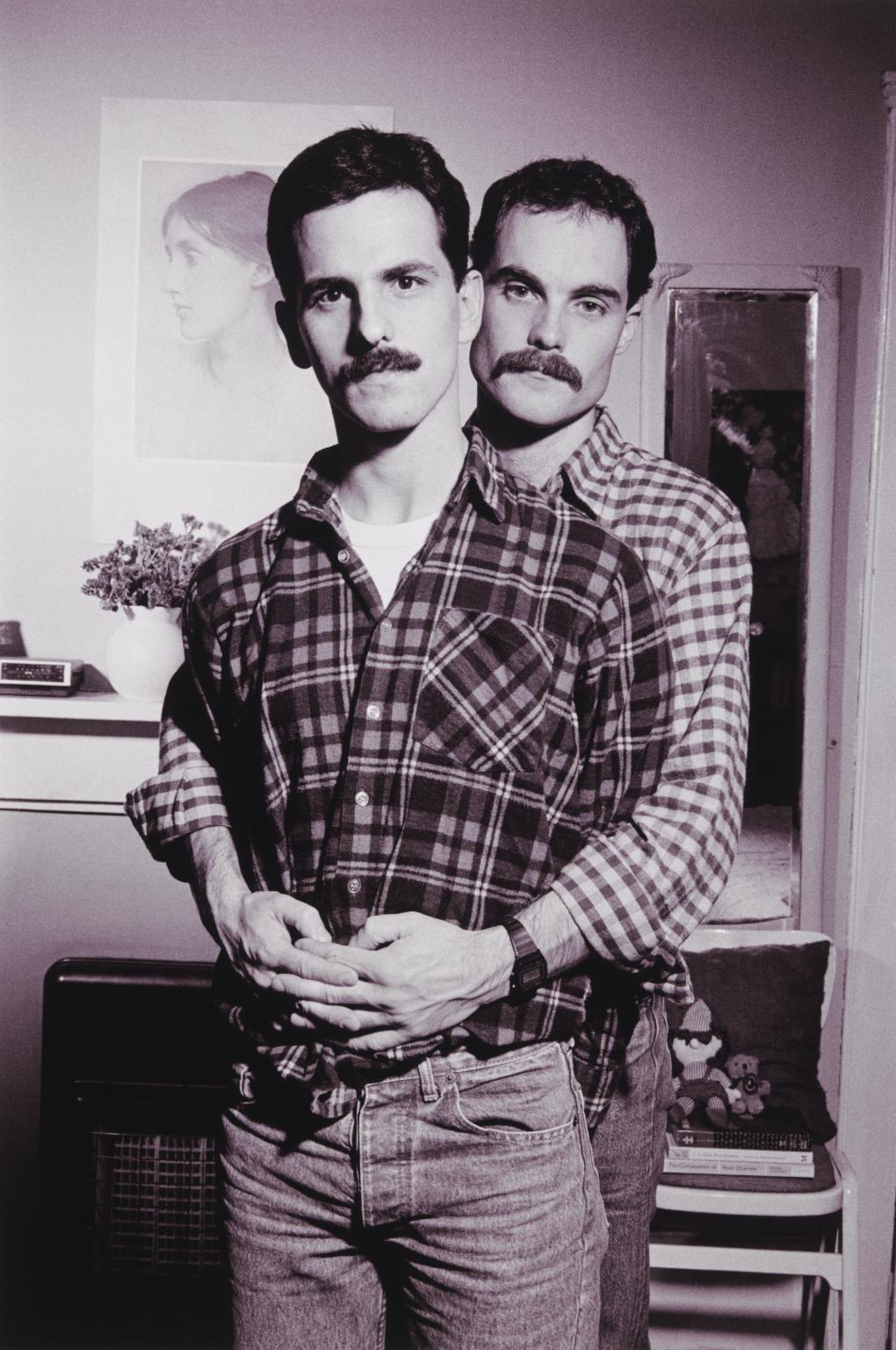
Sunil Gupta, Johnathan & Kim, London 1985, printed 2018
This series of black and white portraits features gay and lesbian couples from Sunil Gupta’s social circles in London and Newcastle. Called Lovers: Ten Years On, the project was shot over a period of two years from 1984–6, following the end of Gupta’s own ten-year relationship. Reminiscent of traditional family portraits, the photographs show couples in affectionate poses in their own living spaces. Prejudicial coverage of the HIV and AIDS epidemic in the 1980s threatened to turn public opinion against the acceptance of queer relationships, which were portrayed as ‘sexually deviant’. In contrast to these offensive depictions of queer love, the people in Lovers: Ten Years On are often presented as quite ordinary, middle-class, professional couples. Many of the people photographed would later lose their lives to HIV and AIDS.
Gallery label, January 2025
12/21
artworks in No Such Thing as Society

Sunil Gupta, Guy & Brian, London 1984, printed 2018
This series of black and white portraits features gay and lesbian couples from Sunil Gupta’s social circles in London and Newcastle. Called Lovers: Ten Years On, the project was shot over a period of two years from 1984–6, following the end of Gupta’s own ten-year relationship. Reminiscent of traditional family portraits, the photographs show couples in affectionate poses in their own living spaces. Prejudicial coverage of the HIV and AIDS epidemic in the 1980s threatened to turn public opinion against the acceptance of queer relationships, which were portrayed as ‘sexually deviant’. In contrast to these offensive depictions of queer love, the people in Lovers: Ten Years On are often presented as quite ordinary, middle-class, professional couples. Many of the people photographed would later lose their lives to HIV and AIDS.
Gallery label, January 2025
13/21
artworks in No Such Thing as Society
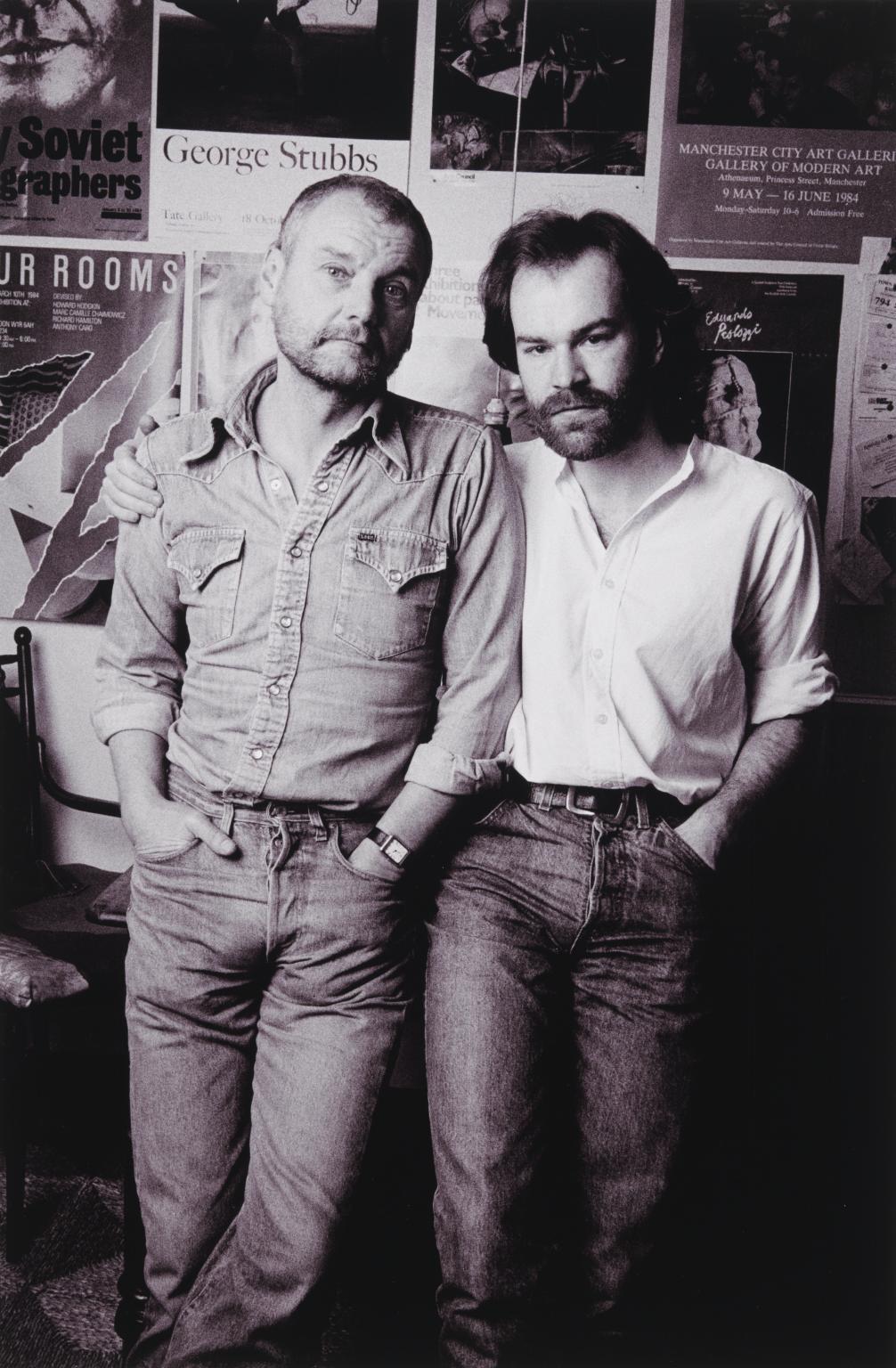
Sunil Gupta, Emmanuel & David, London 1984, printed 2018
This series of black and white portraits features gay and lesbian couples from Sunil Gupta’s social circles in London and Newcastle. Called Lovers: Ten Years On, the project was shot over a period of two years from 1984–6, following the end of Gupta’s own ten-year relationship. Reminiscent of traditional family portraits, the photographs show couples in affectionate poses in their own living spaces. Prejudicial coverage of the HIV and AIDS epidemic in the 1980s threatened to turn public opinion against the acceptance of queer relationships, which were portrayed as ‘sexually deviant’. In contrast to these offensive depictions of queer love, the people in Lovers: Ten Years On are often presented as quite ordinary, middle-class, professional couples. Many of the people photographed would later lose their lives to HIV and AIDS.
Gallery label, January 2025
14/21
artworks in No Such Thing as Society

Sunil Gupta, Dylan & Gerald, London 1985, printed 2018
This series of black and white portraits features gay and lesbian couples from Sunil Gupta’s social circles in London and Newcastle. Called Lovers: Ten Years On, the project was shot over a period of two years from 1984–6, following the end of Gupta’s own ten-year relationship. Reminiscent of traditional family portraits, the photographs show couples in affectionate poses in their own living spaces. Prejudicial coverage of the HIV and AIDS epidemic in the 1980s threatened to turn public opinion against the acceptance of queer relationships, which were portrayed as ‘sexually deviant’. In contrast to these offensive depictions of queer love, the people in Lovers: Ten Years On are often presented as quite ordinary, middle-class, professional couples. Many of the people photographed would later lose their lives to HIV and AIDS.
Gallery label, January 2025
15/21
artworks in No Such Thing as Society

Sunil Gupta, Karl & Daniel, London 1985, printed 2018
This series of black and white portraits features gay and lesbian couples from Sunil Gupta’s social circles in London and Newcastle. Called Lovers: Ten Years On, the project was shot over a period of two years from 1984–6, following the end of Gupta’s own ten-year relationship. Reminiscent of traditional family portraits, the photographs show couples in affectionate poses in their own living spaces. Prejudicial coverage of the HIV and AIDS epidemic in the 1980s threatened to turn public opinion against the acceptance of queer relationships, which were portrayed as ‘sexually deviant’. In contrast to these offensive depictions of queer love, the people in Lovers: Ten Years On are often presented as quite ordinary, middle-class, professional couples. Many of the people photographed would later lose their lives to HIV and AIDS.
Gallery label, January 2025
16/21
artworks in No Such Thing as Society
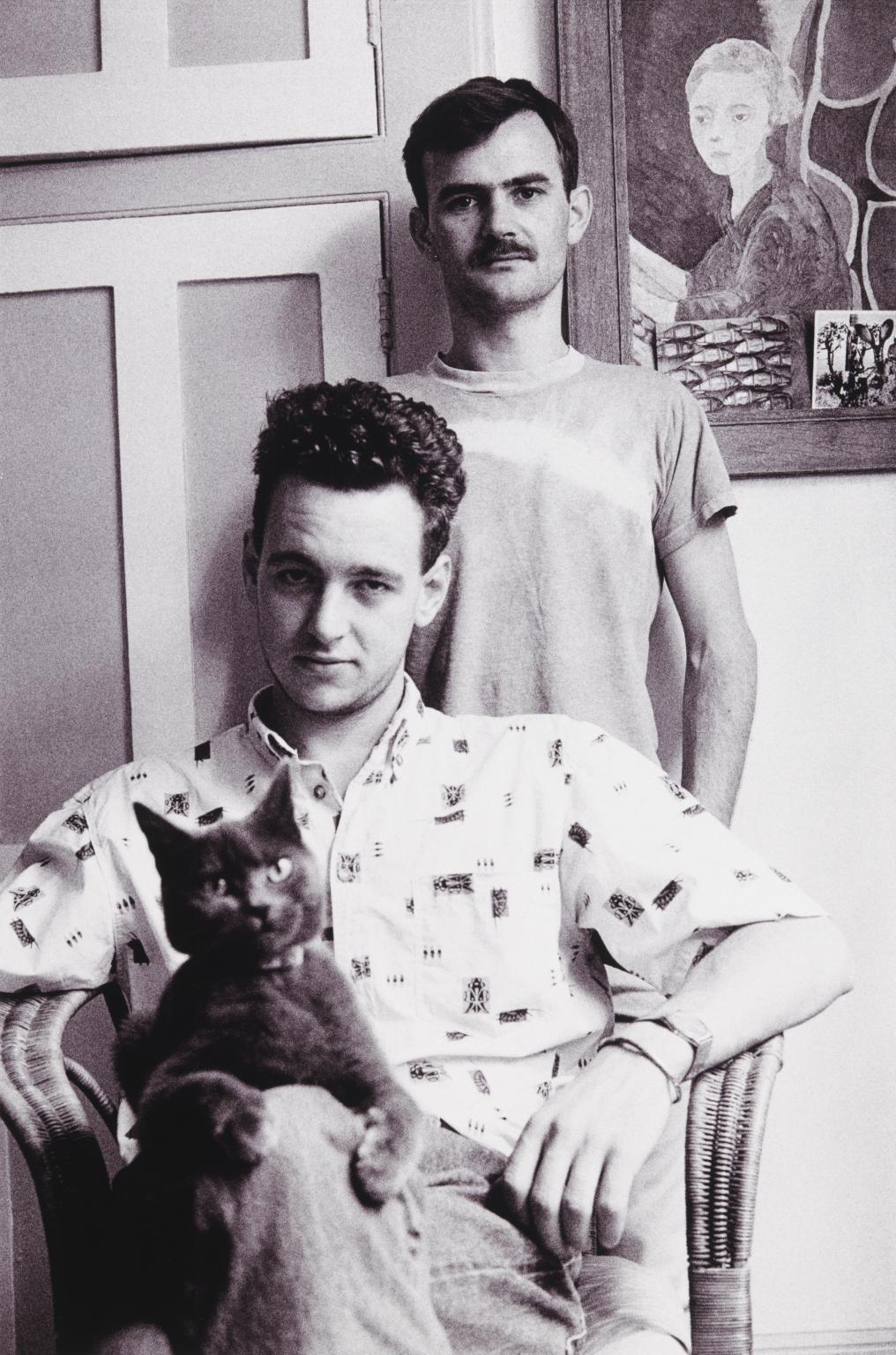
Sunil Gupta, Roger & Steve, London 1984, printed 2018
This series of black and white portraits features gay and lesbian couples from Sunil Gupta’s social circles in London and Newcastle. Called Lovers: Ten Years On, the project was shot over a period of two years from 1984–6, following the end of Gupta’s own ten-year relationship. Reminiscent of traditional family portraits, the photographs show couples in affectionate poses in their own living spaces. Prejudicial coverage of the HIV and AIDS epidemic in the 1980s threatened to turn public opinion against the acceptance of queer relationships, which were portrayed as ‘sexually deviant’. In contrast to these offensive depictions of queer love, the people in Lovers: Ten Years On are often presented as quite ordinary, middle-class, professional couples. Many of the people photographed would later lose their lives to HIV and AIDS.
Gallery label, January 2025
17/21
artworks in No Such Thing as Society
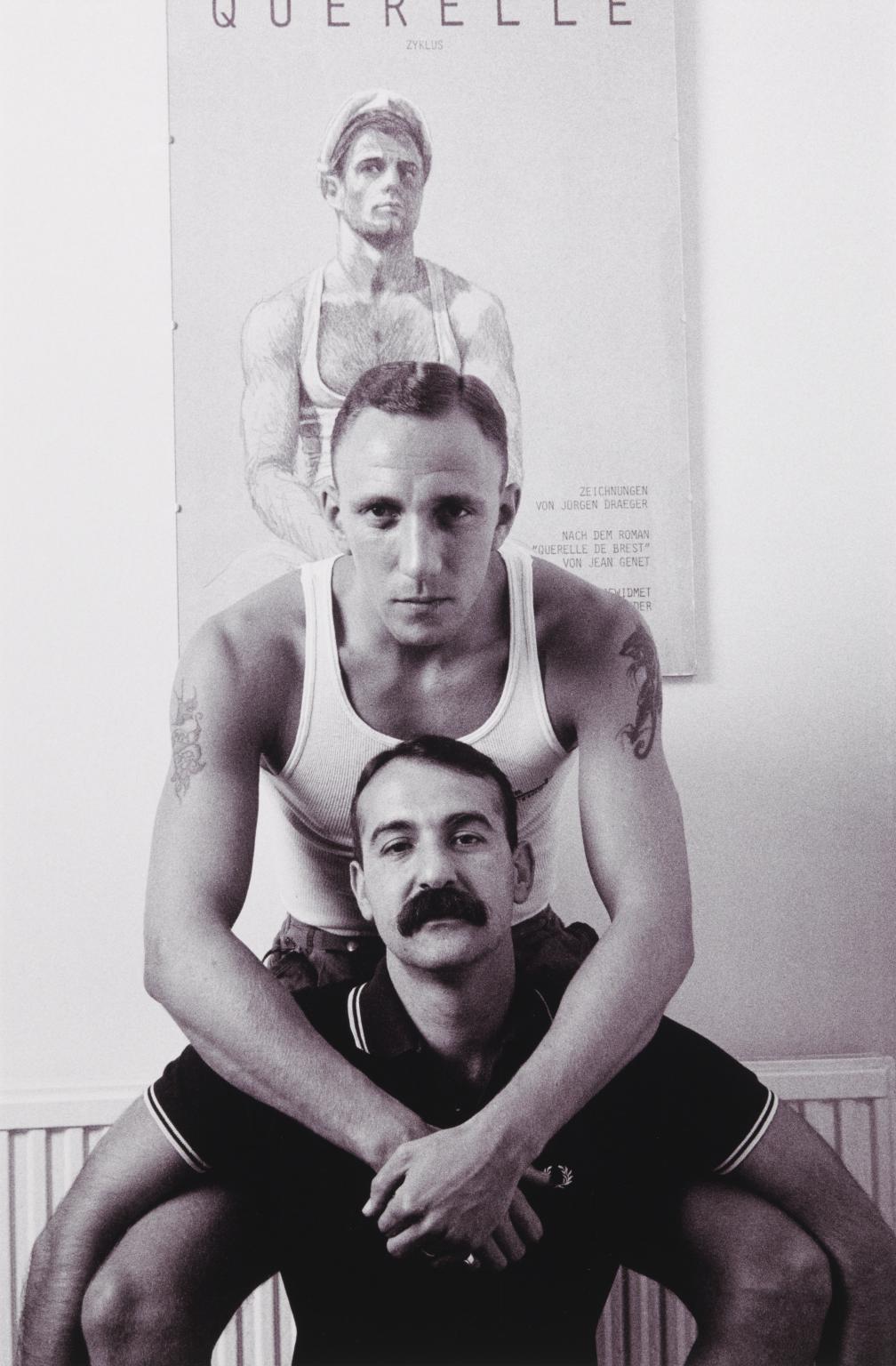
Sunil Gupta, Ian & Pavlik, London 1984, printed 2018
This series of black and white portraits features gay and lesbian couples from Sunil Gupta’s social circles in London and Newcastle. Called Lovers: Ten Years On, the project was shot over a period of two years from 1984–6, following the end of Gupta’s own ten-year relationship. Reminiscent of traditional family portraits, the photographs show couples in affectionate poses in their own living spaces. Prejudicial coverage of the HIV and AIDS epidemic in the 1980s threatened to turn public opinion against the acceptance of queer relationships, which were portrayed as ‘sexually deviant’. In contrast to these offensive depictions of queer love, the people in Lovers: Ten Years On are often presented as quite ordinary, middle-class, professional couples. Many of the people photographed would later lose their lives to HIV and AIDS.
Gallery label, January 2025
18/21
artworks in No Such Thing as Society
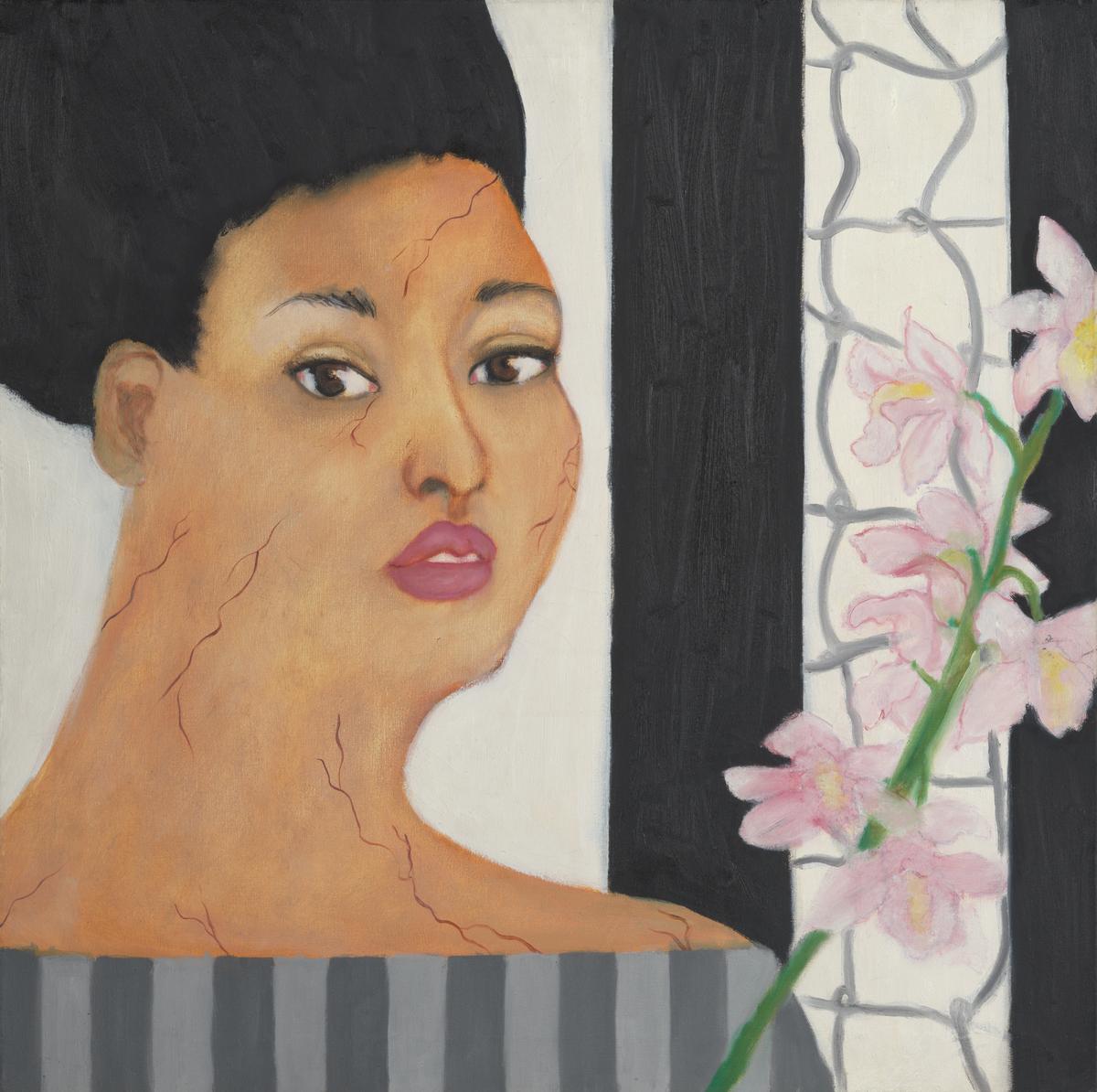
Rita Keegan, Homage to Frida Kahlo 1987
In this self-portrait, Rita Keegan stares out at the viewer. Her direct gaze recalls the self-portraits of Mexican painter Frida Kahlo (1907–1954). Cracks appear throughout her face, neck and chest. Portraiture and self-portraiture feature regularly in Keegan’s practice and are often references to her family photographs. Her extensive archive documents her Black middle-class Canadian family from the 1890s to the present day. Keegan moved to London in 1980 from the US and, in 1982, co-founded Brixton Art Gallery. She has spent her career working to support artists of colour.
Gallery label, January 2025
19/21
artworks in No Such Thing as Society
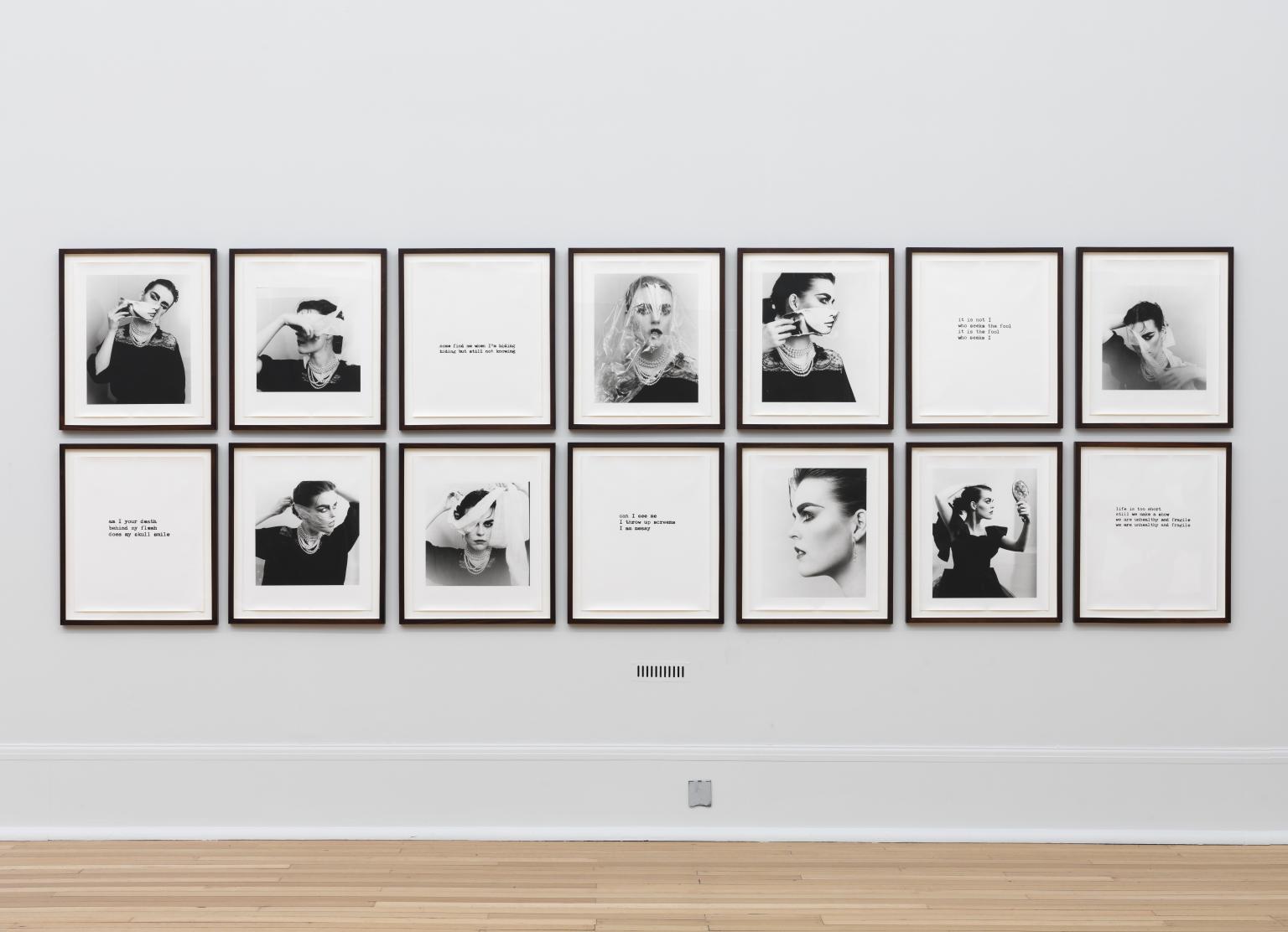
Linder, She/She 1981, printed 2007
She/She consists of fourteen black and white photographs, nine of which are portraits of Linder and the remaining five are photographs of short sections of text written in a typewriter font. The prints are presented in black frames, usually displayed in two horizontal rows of seven to be viewed in the sequence top row left to right, bottom row left to right, with the text pages interspersing the portraits. The photographs of Linder are by the Swiss photographer Christine Birrer, with whom Linder collaborated at this time on a number of different projects. The work was first produced in a booklet Pickpocket: SheShe 1981 to coincide with the release of a six-track cassette tape, Pickpocket, by the group Ludus, of which Linder was a member. The booklet format was slightly different to that originally conceived, and as it has now been printed and editioned. The fragments of text are written by Linder and taken from three of the songs on the cassette, Mutilate, The Fool and Mouthpiece. They refer to the themes of hiding, searching and finding evoked in the images.
20/21
artworks in No Such Thing as Society
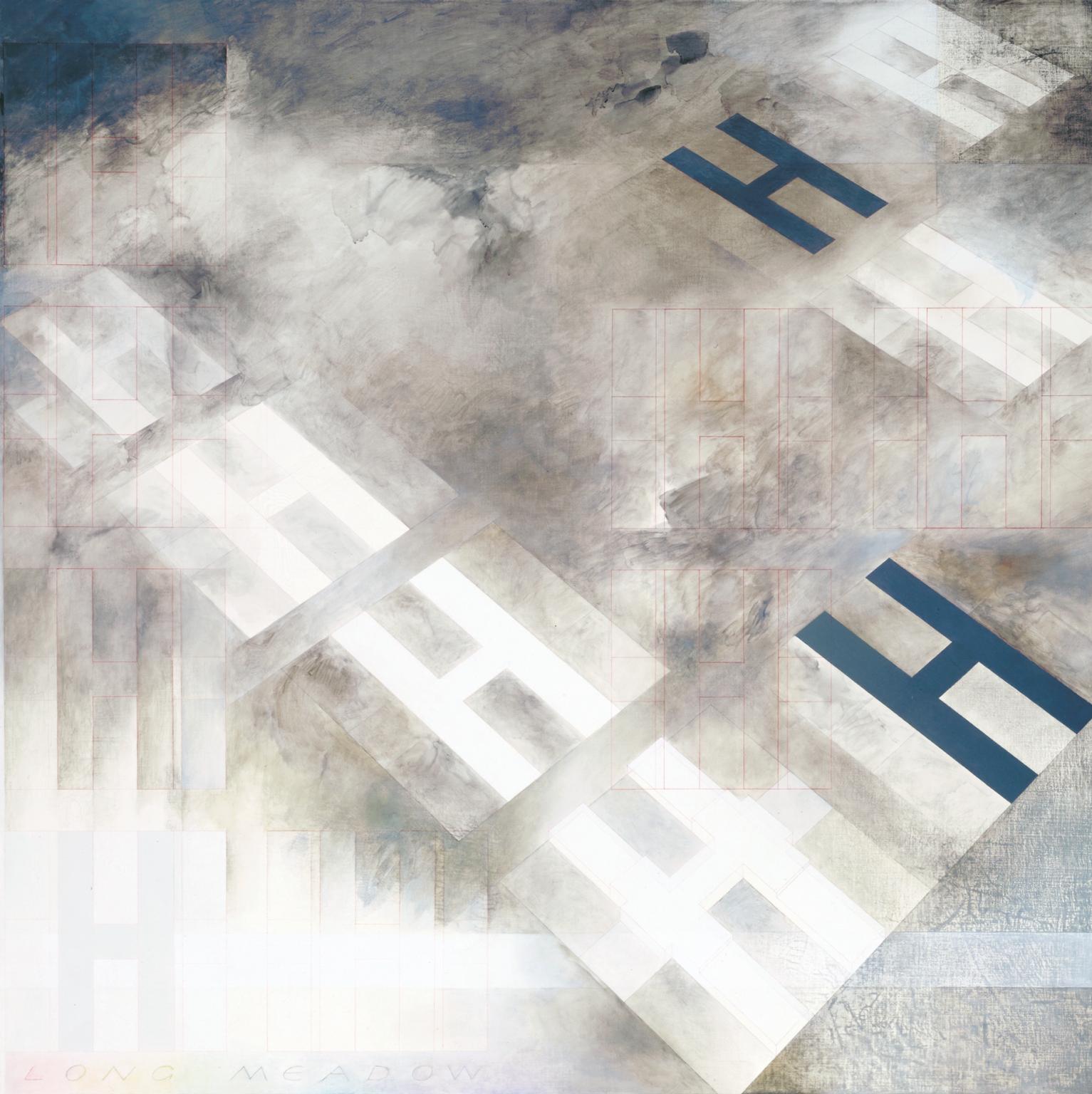
Rita Donagh, Long Meadow 1982
The conflict in the north of Ireland in the 1970s and 1980s saw violent acts by both Unionists and Republicans perpetrated in mainland Britain and Northern Ireland. One of the key sites during those times was the Maze Prison in County Antrim, formerly known as Long Kesh or ‘Long Meadow’, the title of Donagh’s painting. Paramilitary prisoners were housed in the eight prison ‘H Blocks’, projected by Donagh in perspective onto a square canvas, echoing the square plan of a single cell block. The aerial view and the subtle rendering of the light convey the feeling of an air raid.
Gallery label, September 2016
21/21
artworks in No Such Thing as Society
Art in this room





















You've viewed 6/21 artworks
You've viewed 21/21 artworks
